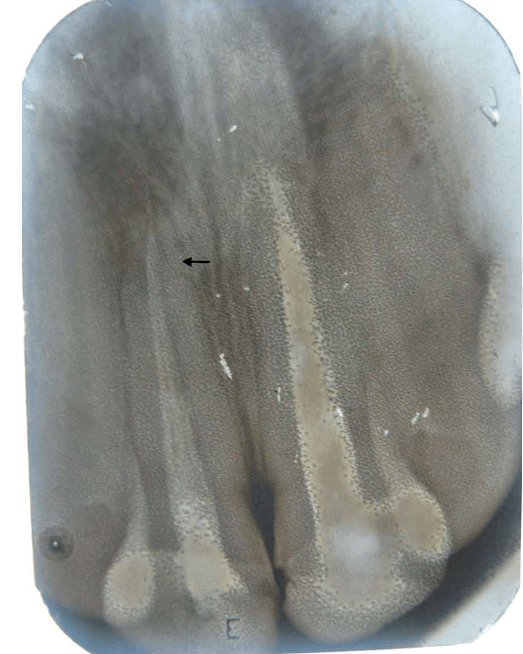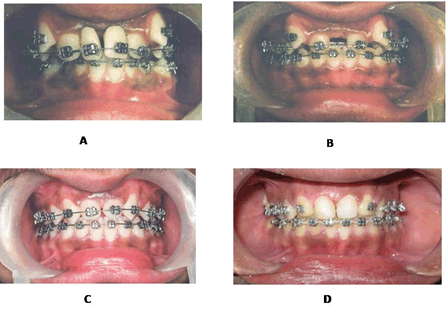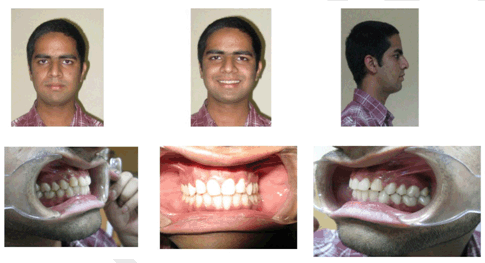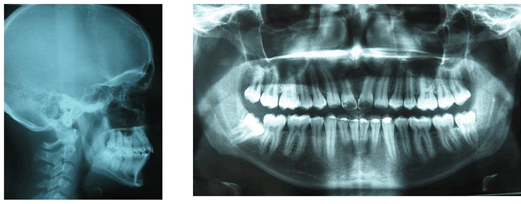| Table of Contents |  |
|
Case Report
| ||||||
| Orthodontic management of a case involving extraction of maxillary central incisors: A rare approach | ||||||
| Sapna Singla1, Gurvanit Lehl2 | ||||||
|
1M.D.S (Orthodontics), Assistant Professor, Department of Dentistry, Govt. Medical College and Hospital, Sector-32.
2M.D.S (Pedodontics), Professor and Head, Department of Dentistry, Govt. Medical College and Hospital, Sector-32, Chandigarh. | ||||||
| ||||||
|
[HTML Abstract]
[PDF Full Text]
[Print This Article]
[Similar article in Pumed] [Similar article in Google Scholar] |
| How to cite this article: |
| Singla S, Lehl G. Orthodontic management of a case involving extraction of maxillary central incisors: A rare approach. J Case Rep Images Dent 2016;2:15–18. |
|
Abstract
|
|
Orthodontic cases managed by extraction of maxillary central incisors are very uncommon, but certain conditions necessitate their extraction. This article reports a case of adolescent boy with a history of trauma to the maxillary incisors. The patient was treated with extraction of both the maxillary central incisors followed by space closure and lateral incisors substituting for central incisors.
| |
|
Keywords:
Maxillary central incisors extraction, Maxillary lateral incisors, Orthodontic replacement, Space closure
| |
|
Introduction
| ||||||
|
Orthodontic management involving extraction of both maxillary central incisors is very rare. However, extraction of these teeth might become the treatment of choice in certain conditions. These conditions include malformed, grossly displaced, dilacerated, ankylosed, fractured due to trauma, teeth with resorbed roots or associated with some local pathology [1] [2]. Depending upon the individual requirement, treatment could be either space maintenance for later prosthetic replacement [3], or space closure by substituting lateral incisors for central incisors [4] [5] [6] [7][8]. The latter type of treatment plan can provide space to correct crowded or protrusive dentition without extracting other teeth as well as obviating the need for further prosthetic replacement. This article presents a case of class I malocclusion complicated by trauma and treated by extraction of both the maxillary central incisors. | ||||||
|
Case Report
| ||||||
|
A 14-year-old boy presented to our department with a chief complaint of irregular arrangement of upper and lower teeth. On extraoral examination patient had mesoprosopic, grossly symmetrical face, convex profile with incompetent lips (Figure 1) and (Figure 2). He had a history of trauma to upper anterior teeth at the age of 12 years. On intraoral examination he had Angle's Class-I molar relationship bilaterally with severe crowding in both upper and lower teeth. Both the maxillary central incisors had composite restorations and were severely discolored (Figure 1) (Figure 2). The periapical radiograph showed fractured crowns of both the maxillary central incisors with endodontic treatment of both and a faint fracture line in the apical third of right maxillary incisor (Figure 3). The fracture line was confirmed by taking another periapical radiograph at different tube angle. Although clinically, maxillary central incisors were asymptomatic, but their long-term prognosis was questionable. Treatment Objective Treatment alternatives Treatment progress Treatment Results | ||||||
| ||||||
| ||||||
| ||||||
| ||||||
| ||||||
| ||||||
|
Discussion
| ||||||
|
The orthodontic management of class I malocclusion with severe crowding is routinely carried out by extraction of four first premolars. However, the present case was treated with atypical extraction of maxillary central incisors instead of first premolars. Very few cases involving maxillary central incisors extraction are reported in the orthodontic literature [9] [10][11]. Although acceptable esthetic outcome and occlusion could be achieved in this case, but definitely there were certain challenges with this type of treatment plan. First concern was to simulate maxillary lateral to central and maxillary canine to lateral incisors. For this, maxillary laterals and canines needed to be reshaped. The canine's labial surface as well as palatal surface was reduced to make it flatter. The cusp tip was reduced to produce a flat incisal edge. Studies have shown that fairly extensive dental grinding can be performed without significant discomfort, and that with minor or no pulp and dentin reactions and long-term studies have confirmed that any unfavorable reactions are temporary [12][13]. Besides certain modifications in the orthodontic appliance were done, like placing of maxillary central incisor brackets on maxillary laterals and maxillary lateral incisors brackets on maxillary canines. Also brackets were placed incisally on laterals and gingivally on canines and to intrude and extrude them respectively to level their gingival margins. Though esthetics was acceptable, long-term esthetics could be further improved with porcelain laminates or veneers. | ||||||
|
Conclusion
| ||||||
|
Extraction of the maxillary central incisors might be a good alternative in some patients to preserve tooth structure and improve esthetics as long as the patient's diagnostic characteristics permit. However, additional restorative and periodontal procedures might be necessary to provide good esthetic results. | ||||||
|
Acknowledgements
| ||||||
|
We would like to thank Dr Monika Kamboj, Senior Resident, Department of Dentistry, Govt. Medical College and Hospital, Chandigarh for performing gingivectomy for this patient. | ||||||
|
References
| ||||||
| ||||||
|
[HTML Abstract]
[PDF Full Text]
|
|
Author Contributions
Sapna Singla – Substantial contributions to conception and design, Acquisition of data, Analysis and interpretation of data, Drafting the article, Revising it critically for important intellectual content, Final approval of the version to be published Gurvanit Lehl – Analysis and interpretation of data, Revising it critically for important intellectual content, Final approval of the version to be published |
|
Guarantor of submission
The corresponding author is the guarantor of submission. |
|
Source of support
None |
|
Conflict of interest
Authors declare no conflict of interest. |
|
Copyright
© 2016 Sapna Singla et al. This article is distributed under the terms of Creative Commons Attribution License which permits unrestricted use, distribution and reproduction in any medium provided the original author(s) and original publisher are properly credited. Please see the copyright policy on the journal website for more information. |
|
|









